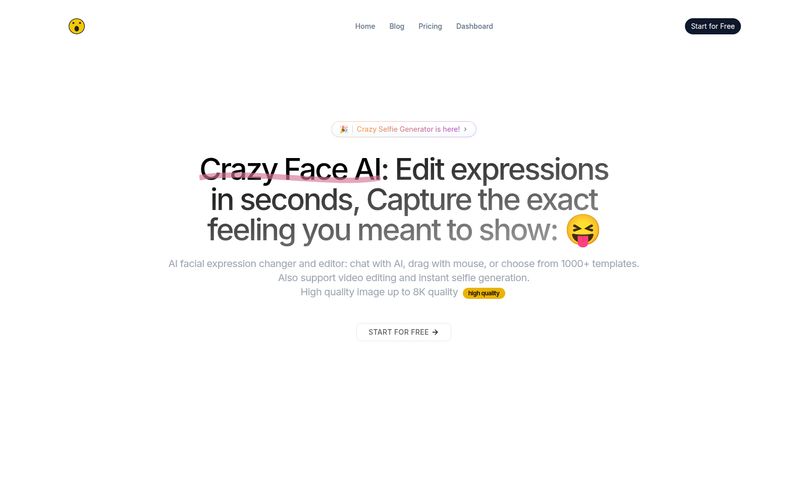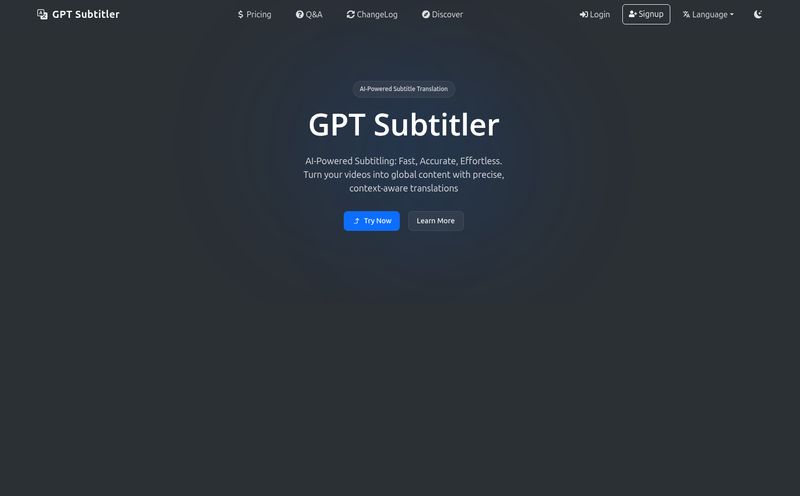For years, the world of digital accessibility has felt like a two-steps-forward, one-step-back kind of dance. We all know it's the right thing to do. It’s also the smart thing to do, legally and ethically. But man, the sheer effort involved can be staggering. I’ve personally lost weekends to manually tagging PDFs and hunting down missing alt text on a 500-page website. It’s tedious work that’s absolutely critical but drains resources like nobody's business.
So, when a company comes along waving the “AI-powered solutions” flag, my ears perk up. Part of me gets excited; the other, more cynical part, raises an eyebrow. We’ve all seen those sketchy accessibility “overlays” that promise the world and deliver a lawsuit. But Continual Engine feels… different. Their message isn't about a magic wand; it's about “Automating Accessibility” to “Empower Inclusion.” And their whole philosophy seems to be about putting people at the center. I like that.
So I decided to take a proper look under the hood. Is this the tool that finally helps us scale the mountain of digital inclusion, or is it just more hype?
First Off, What Is Continual Engine?
At its heart, Continual Engine is a technology company that uses artificial intelligence to tackle the massive challenges of making digital content accessible. Think of them as a high-tech partner for organizations drowning in inaccessible content. They’re not just selling a single piece of software; they offer a whole suite of services aimed at educational institutions, publishers, and businesses—basically anyone who needs to ensure their digital front door is open to everyone, regardless of ability.
Their mission, from what I can gather, is to make creating equitable experiences faster, cheaper, and more effective. It’s a noble goal, and one that the industry desperately needs.

Visit Continual Engine
Why We Can't Ignore Digital Accessibility Anymore
For a long time, accessibility was treated as an afterthought. A checklist item to be dealt with right before launch. Thankfully, that's changing. The conversation has shifted from a technical problem to a human rights issue. And let's be blunt, it’s also a massive legal issue. The number of web accessibility lawsuits filed in the U.S. continues to climb, with companies being sued under the Americans with Disabilities Act (ADA) for having websites that are unusable for people with disabilities.
It’s not just about avoiding lawsuits. It's about reaching the 1 in 4 adults in the United States who live with a disability. That’s a huge chunk of your potential audience, your customers, your students. Making your content accessible is just good business. It improves your SEO, enhances user experience for everyone, and builds a brand reputation that’s genuinely inclusive. This isn’t just a fresh coat of paint; it’s about rebuilding the entrance ramp so everyone can get in the building.
A Closer Look at Continual Engine's AI-Powered Services
So, how do they actually do it? Their approach is multi-pronged, using AI to automate the most repetitive and time-consuming tasks. Let's break down their main offerings.
Taming the Document Beast with AI Remediation
If you've ever had to make a hundred-page PDF accessible, you know the pain. It’s a click-heavy nightmare of adding tags, checking reading order, and describing images. Continual Engine aims to automate this process. Their AI can analyze documents—PDFs, PowerPoint slides, you name it—and handle a huge portion of the remediation work. This means transforming unstructured content into a format that screen readers can easily navigate. For a university with thousands of legacy course documents or a corporation with a library of annual reports, this is a game-changer. It turns a manual, error-prone task into something scalable and consistent.
Beyond Checklists for Real Website Accessibility
Website accessibility is more than just passing an automated scan. Continual Engine's services here combine AI-powered analysis with expert-led strategy. They help organizations meet standards like the Web Content Accessibility Guidelines (WCAG) and Section 508. The idea is to build accessibility into the foundation of a website, rather than just patching holes. While I'm always cautious about over-reliance on automation for nuanced web issues, using AI to identify problems at scale, like missing ARIA labels or poor color contrast across thousands of pages, is an incredibly powerful starting point.
Making Videos and Images Speak to Everyone
This is one of the most compelling use cases for their AI. Manually creating closed captions, audio descriptions for videos, and writing meaningful alt text for thousands of images is a monumental task. Continual Engine automates this. Their deep learning models can generate descriptive alt text for images, providing context for visually impaired users that would otherwise be lost. For video content, they automate the creation of captions and audio descriptions, making multimedia content accessible to people with hearing or visual impairments. The quality of AI-generated descriptions has gotten surprisingly good, and for large-scale projects, it’s the only feasible path forward.
Education for All with Accessible Online Courses
With the boom in e-learning, ensuring that online courses and training materials are accessible is more important than ever. This is a clear focus for Continual Engine. They work to make entire learning platforms, from the course content and PowerPoints to the interactive elements, fully accessible. This is where all their services—document remediation, video captioning, website accessibility—come together to create a cohesive, inclusive learning environment. It’s not just about compliance; it’s about providing an equal opportunity for education.
The Good, The Bad, and The AI
Alright, no tool is perfect. Let's get down to the brass tacks. Based on what I've seen and the common sense realities of our industry, here’s my take.
The big wins here are obvious: efficiency, scalability, and cost-effectiveness. By automating the grunt work, Continual Engine allows organizations to tackle accessibility projects that would have been financially or logistically impossible before. Instead of taking months to remediate a backlog of documents, it could potentially be done in a fraction of the time. This frees up human experts to focus on the more complex, nuanced issues that AI can't (and shouldn't) handle alone. It makes the goal of 100% accessible content feel less like a distant dream and more like an achievable objective.
However, and this is a big however, we need a reality check. The major caveat is the reliance on AI. While powerful, AI isn’t infallible. For highly complex content, like intricate scientific diagrams or legal documents where every nuance matters, human oversight is still absolutely necessary. Think of the AI as an incredibly smart and fast assistant, not a replacement for a human expert. You still need someone with deep accessibility knowledge to review the output, handle edge cases, and make final judgments. The initial setup might also require an investment, both in cost and in training your team to work with these new AI-driven workflows.
Let's Talk Money: The Continual Engine Pricing Question
This is the part where I'd love to show you a neat little pricing table. But, you won't find one on their site. When I went looking, I actually hit a 404 page, which is a bit ironic for a web-focused company but hey, it happens to the best of us.
This lack of public pricing is typical for enterprise-level, service-based solutions. The cost of remediating a 10-page marketing brochure is vastly different from making a university’s entire 10,000-document library compliant. The scope of work, volume of content, and complexity will all factor in. So, you’ll need to contact them for a custom quote. Don't see this as a red flag; see it as a sign that they tailor their solutions rather than offering a one-size-fits-all product that likely wouldn't fit anyone perfectly.
My Final Take: Is Continual Engine Worth a Look?
Absolutely. Especially if you're an organization staring down a mountain of digital content and a limited budget. For educational institutions, large corporations, and publishers, the ROI seems incredibly compelling. It’s a tool that provides the leverage needed to make meaningful progress on accessibility without hiring an army of manual remediators.
I believe tools like Continual Engine represent the future of digital accessibility. Not a future devoid of humans, but one where humans are empowered by intelligent automation to do their best work. It's about combining the scale of machine learning with the nuance of human expertise. If you’re serious about inclusion, and you need a practical way to get there, starting a conversation with them seems like a very smart move.
Frequently Asked Questions about Continual Engine
- What is Continual Engine in simple terms?
- Continual Engine is a company that uses artificial intelligence (AI) to help make digital content like websites, documents, and videos accessible to people with disabilities, making the process faster and more affordable.
- Who should use Continual Engine?
- It's designed for organizations with a large amount of digital content, such as universities, publishers, and large businesses that need to comply with accessibility standards like WCAG and the ADA.
- Is Continual Engine a fully automated solution?
- No, and that's a good thing. It uses AI to automate a significant portion of the work, but it's positioned as an AI-led service that often works in tandem with human experts for quality assurance and complex tasks. Human oversight is still a key component for ensuring true accessibility.
- How does Continual Engine help with WCAG and ADA compliance?
- By automating tasks like adding alt text to images, creating video captions, and structuring documents and websites correctly, their services directly address many of the technical requirements outlined in WCAG, which is the standard often cited in ADA-related legal cases.
- How can I find out the pricing for Continual Engine?
- You'll need to contact them directly for a quote. Their pricing is customized based on the specific needs, volume of content, and complexity of your project, as they provide a service rather than a fixed-price software product.
- What makes it different from a simple accessibility overlay?
- Unlike many overlays that apply a temporary, often ineffective, layer over a website, Continual Engine works on remediating the source content itself—the documents, the videos, the website's code. This creates a more robust and genuinely accessible experience rather than a superficial fix.
Moving Forward with Inclusion
The journey to a fully accessible digital world is a long one, but it's not one we have to walk alone or with outdated tools. Innovations like the AI-driven solutions from Continual Engine are the powerful allies we need. They're helping to dismantle barriers at a scale we couldn’t have imagined a decade ago. It’s an exciting time to be in this field, and seeing technology used to empower people is, at the end of the day, what it's all about.
Reference and Sources
- W3C - Web Content Accessibility Guidelines (WCAG) Overview
- U.S. Department of Justice - Americans with Disabilities Act (ADA)
- CDC - Disability Impacts All of Us Infographic



